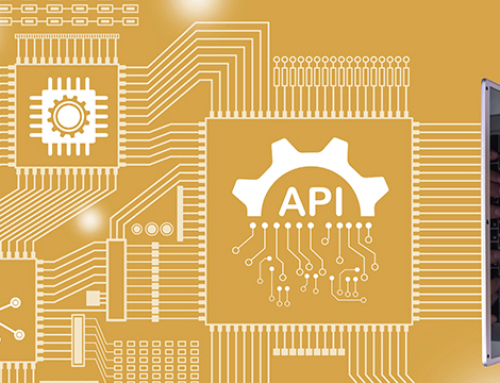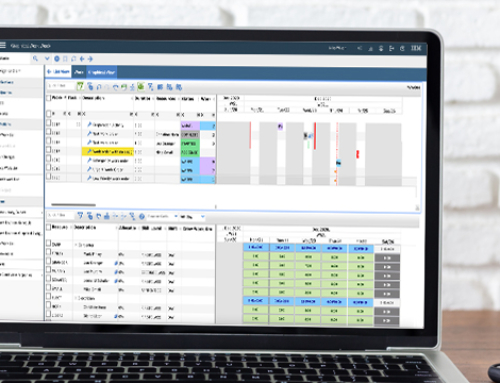Why are some EAM implementations so successful, while others flounder?
Enterprise Asset Management (EAM) has proven, measurable benefits. It helps organizations to track, assess, manage, and optimize critical assets, address compliance risk, optimize costs, reduce downtime, and improve responsiveness. However, the road to success with EAM varies drastically from one organization to the next, with some implementations facing far more challenges than others.
Organizations who successfully implement an EAM system such as IBM Maximo share several common elements. Time and again, we’ve found the following key factors to be critical to success.
Gain Stakeholder Buy-in
Ask yourself: “How much does strong stakeholder buy-in affect any new organizational project?” Here’s the more important question to ask yourself, “How likely is a project to have challenges and risk a point of failure if the buy-in is not agreed upon?” We have witnessed both cases, but let’s lay out the areas of stakeholder buy-in and ideas that allow us to gain strong engagement for your project. The stakeholder’s buy-in is internal customers, resources, and management who would support or oppose the decisions made by the business by internal and external individuals. The first step toward involving the critical decision-makers in the project process is to agree on their needs and how they are linked to the project’s direction. Listed below are efforts to gain buy-in from stakeholders:
- Identify and ensure to include all internal stakeholders in the process
- Understand their departmental needs
- Involve key stakeholders early in the process
- Provide clear and concise business justification for the project (goals/purpose/intent)
- Thoroughly depict benefits of the project (business value)
- Identify potential risks or issues and discuss how best to manage
- Actively listen and communicate feedback and agree on stakeholder needs, concerns, or ideas
Most importantly, it is essential to get complete stakeholder buy-in from the beginning.
Learn the Requirements
One of the most fundamental steps a team can take is detailing precise requirements for the process. Having a comprehensive requirements specification document allows the team to develop solutions on time and within budget. Whereas there are benefits of creating quality requirements, there are consequences of creating poor ones. These consequences can be grave in manufacturing, engineering, product development, and software development, appearing in all downstream activities, including architecture, design, implementation, and testing. Having poor requirements can increase development and sustainment costs and often cause major schedule overruns.
More generally, the business is affected by poor requirements through the projects that the company undertakes. Here’s a shortlist of negatively affected areas:
- Project scope (creep)
- Project budget (money and time)
- Resources (low utilization, overheads)
- Business process design (insufficient details about activities)
- Software specification (unclear requirements for functionality)
- Solution testing (poor specification amplifies the negative effect of poor requirements)
- Code rework (time-consuming and costly task)
- Stakeholder engagement (loss of trust)
Success is achieved by aligning high-level requirements with strategic goals. Collaboration with stakeholders is instrumental in engaging them and building relationships based on mutual trust. Stakeholders need to understand the high-level requirements that must be accepted and agreed upon before moving towards the more specific business requirements. The time spent on definition and agreement on the high-level requirements will pay off at project completion.
Have a Skilled Implementation Team
A skilled implementation team is needed to bridge the gap between your organization’s current processes and the processes required to use your EAM software successfully. Integrating your enterprise systems is not easy. Chances are, there will be many questions, but who will you ask? You may not have internal team members who have experience with enterprise integrations. Set implementation goals and key milestones and develop clear plans to extract data from key stakeholders before you begin implementation and assemble an implementation team to champion the project.
Be wary that, although relying on an internal team can lower costs, it could cost the business more in the long term if they don’t have the adequate skills to implement the software successfully. Having a skilled implementation team who is well versed in EAM implementation and maintenance best practices to bridge the gap and alleviate pressure on your key stakeholders, is critical to the success of your project. Select a vendor who focuses on the more significant organizational problems you are hoping to solve with an EAM system, not one looking to sell you software and move on.
Invest in Training, Communication, and Engagement
When IT budgets overrun, the training budget is the first to be cut. One of the most common causes of implementation failure is a lack of end-user training. Training is often overlooked because the focus is on getting the system implemented immediately to cause minimum disruption to the business. It’s important to factor in user testing and training as part of the implementation process to ensure your maintenance workforce is comfortable using the solution. Training should be an ongoing consideration as new features are added and software is updated.
Additionally, ongoing training courses enable you to outline EAM best practices and increases user adoption. Every organization is unique, with its own culture and ways of working. Understanding what makes your organization extraordinary is critical to help guide you through change.
We see organizations getting so caught up in communicating what is changing; they forget to communicate what stays the same. If an organization is experiencing a merger/acquisition or a reduction in force that causes budget constraints, there is something that remains constant. The constant is typically your culture, values, or even leaders. Look for the knowns and communicate them, identify the unknowns and be honest and transparent in your communication.
EAM provide real and measurable cost savings and competitive advantages for companies that select the appropriate applications and plan their implementations intelligently. In general, the implementation of EAM software addresses more of the business functions supporting the asset (i.e., contract management, inventory, document management, and even human resources and finance) offer greater return on investment than can be achieved by simply addressing maintenance needs.
It is essential to think holistically to plan the implementation to minimize business disruption and leave end-users with a system they can use comfortably and capably. Learning from these experiences of others will help you to experience the benefits of EAM while avoiding many of the pitfalls of implementation.
Have a question about your EAM program or Maximo implementation? Reach out anytime – we’d love to help.







